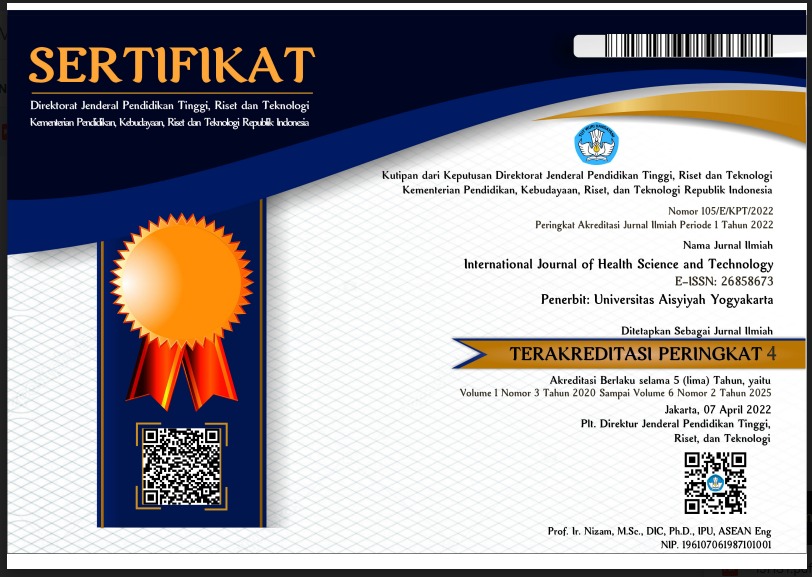The effect of core stability exercise in reducing the risk of falling in the elderly at the work area of Kasian 1 public health center
DOI:
https://doi.org/10.31101/ijhst.v3i1.1910Abstract views 541 times
Keywords:
elderly, core stability exercise, risk of fallingAbstract
References
Alibhaksi, et all (2010).The effect of core stabilization training program on elderly postural control. access from www.researchgate.net/publication. access dated 23 September 2015.
Body Stastitika Center.(2019).Report Population census year. Bantul
Forrest, Goerge P, et all. (2012).A comparison of the functional independence Measure and Morse Fall scale as tools to assess Risk of fall on an Inpatient Rehabilitation. Assosiciaton of Rehabilitation Nurse Mar/April 2013.pg 189.
Kibler, W.B. (2006).The role of core stability in athletic function. page 189- 198. Joel Press.
Langley, F.A. & Mackintosh, S.F.H. (2007).Functional balance assessment of older community dwelling adults: a systematic review of the literature.The Internet Journal of Allied Health Sciences and Practice,Vol. 5.
Munawwarah,Muth. et all. (2015).Giving exercise to the elderly can improve balance and reduce the risk of falling in the elderly.Esa Unggul University Faculty of Physiotherapy. Journal of Physiotherapy vol.15 number1
Perdana, A. (2014). The Difference of Wooble Board Training and Core Stability Training on Increasing Balance in Esa Unggul Students.Physiotherapy,14(2), 57–68.
Downloads
Additional Files
Published
How to Cite
Issue
Section
License
International Journal of Health Science and Technology allows readers to read, download, copy, distribute, print, search, or link to its articles' full texts and allows readers to use them for any other lawful purpose. The journal allows the author(s) to hold the copyright without restrictions. Finally, the journal allows the author(s) to retain publishing rights without restrictions
- Authors are allowed to archive their submitted article in an open access repository
- Authors are allowed to archive the final published article in an open access repository with an acknowledgment of its initial publication in this journal

This work is licensed under a Creative Commons Attribution-ShareAlike 4.0 Generic License.










